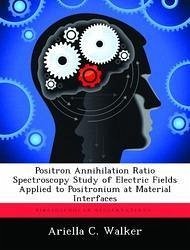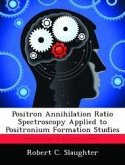The purpose of this research was to develop a new code to analyze the data from AFIT's positron annihilation of radiation spectrometer, PsARS, system. The PsARS was used to analyze positronium formation at the surface of a capillary tube coated with gold. Using energy and geometry filters, the PsARS code determined the ratio of ortho-positronium to para-positronium. An electric field applied across the capillary tube wall forced positrons to move towards the gold surface of the capillary tube and prevent them from dropping into the Ore gap before they reach the surface. Inside the Ore gap, the positrons are more likely to form positronium. With the addition of the electric field, the positrons gain energy to overcome the loss of energy from scattering. Once at the surface, a secondary electric field applied from the capillary tube surface to the vacuum chamber wall polarized the positronium, increasing their lifetimes. The capability to force the positrons to gather on the gold surface of the capillary tube was demonstrated. In addition to the PsARS system, a positron annihilation lifetime spectroscopy, PALS, system was used to analyze the lifetimes of the positrons.
Hinweis: Dieser Artikel kann nur an eine deutsche Lieferadresse ausgeliefert werden.
Hinweis: Dieser Artikel kann nur an eine deutsche Lieferadresse ausgeliefert werden.








